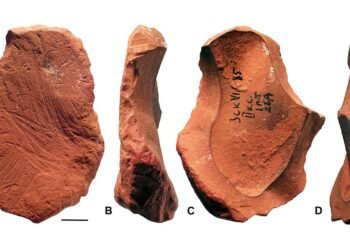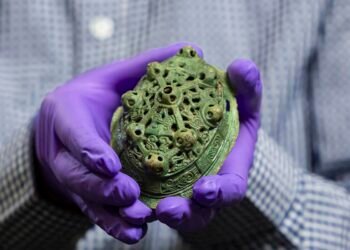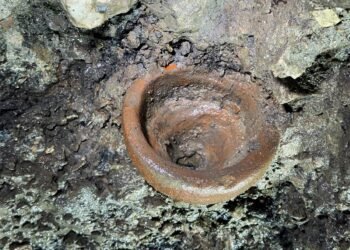A literary enigma that has puzzled scholars for more than a century might have finally been unraveled. Researchers at Cambridge University have reinterpreted a fragment of the lost medieval poem known as The Song of Wade, gaining new insight into its meaning and redefining our understanding of how Geoffrey Chaucer alluded to the story in his writings.

Initially discovered in 1896 by M. R. James, a Cambridge scholar best known for his ghost stories, the only surviving excerpt of The Song of Wade was found in a 12th-century Latin sermon containing several lines in English. James and his colleague Israel Gollancz identified the lines as coming from a lost romantic poem. But for the next 130 years, their importance was uncertain, largely due to the difficulty in reading the medieval handwriting and language.
Now, Dr. James Wade and Dr. Seb Falk, both Fellows at Cambridge’s Girton College, believe they have cracked it at last. In a recent article published in The Review of English Studies, the scholars argue that a couple of transcription errors—namely a mix-up between the letters “w” and “y”—led generations of experts to misread the work.

The original text was conventionally translated as:
“Some are elves and some are adders; some are sprites that dwell by waters: there is no man, but Hildebrand only.”
But Wade and Falk offer an alternative version:
“Some are wolves and some are adders; some are sea-snakes that dwell by the water. There is no man at all but Hildebrand.”
This alteration shifts the imagery of the poem from mythic beings to more grounded, animalistic figures. To Falk, this reinterpretation situates The Song of Wade not as a supernatural epic, but rather as a chivalric romance. “Changing elves to wolves makes a massive difference,” he said. “It shifts this legend into the human battles of chivalric rivals.”

The reinterpretation also sheds new light on earlier enigmatic references to Wade in Chaucer’s work. In Troilus and Criseyde, for instance, Pandarus tells the tale of Wade as a means of inducing the emotions of romance—a context more appropriate to a chivalric romance than to a mythic legend. So too, in The Merchant’s Tale of The Canterbury Tales, a character makes a reference to Wade’s boat during a discussion about marriage—another moment that loses its obscurity when understood in the context of romance literature.
Even though not all scholars agree on the full implications, most recognize the importance of the reinterpretation. Apart from literature, the discovery also provides insight into how preachers engaged with the public during medieval times. The sermon in which the Wade lines appear—Humiliamini—was most likely written by Alexander Neckam, a 12th-century theologian. Wade and Falk argue that the preacher included the popular tale to engage his listeners, much like a modern sermon might reference pop lyrics to sound relatable. Falk described it as “very early evidence of a preacher weaving pop culture into a sermon.”

The sermon itself is a lesson in humility, comparing sinful human behaviors to animals like wolves, adders, and sea-snakes—creatures infamous for their aggression and deceit. Wade says, “It warns that it’s us, humans, who pose the biggest threat, not monsters.”
The preacher also shared a cautionary anecdote about Hugh of Gournay, a knight known for notoriously switching allegiances multiple times between England and France. His final act of repentance—tying a noose around his neck and surrendering—was used as a vivid picture of chivalric humility.
As Falk explained, “This sermon demonstrates new scholarship, rhetorical sophistication, and inventiveness—and it has strategic aims.” To modern scholars, it offers fresh insight into how medieval society mixed religion, literature, and popular story, proving that even 800 years ago, preachers understood the power of a good cultural reference.






















Comments 0